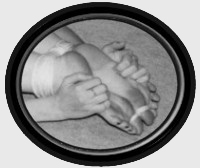Prologue
There's no direct tickling in the prologue. It's more about world building than plot. If you want to jump ahead to the good stuff, start with chapter 1
It was in the 23rd century that the science of cultural engineering was created. Before then, every society created by human beings was a spontaneous creation, with no planning or blueprint. Their traditions and mores were chosen seemingly at random, their taboos, goals and attitudes decided by pure chance, drawn from the dogma of the dominant the religion, or taken from whatever school of philosophy was in fashion during that eon. No thought was given to how they would affect society. Those early communities were like machines that built without blueprints, haphazard things that worked as often as not.
Cultural engineering changed all that. Its scientists studied how societies worked and what made them stable. They did not use morality to do this, common sense or even popular opinion to do this. No, they used mathematics and scientific laws to study every cultural tradition, every belief, every institution that humanity had ever created. When they were done, they were able to say, factually and unbiased, how each effected society. That data could then be given to the leaders of the society to decide which institutions to keep, which to modify and which to jettison completely.
Of the many changes they suggested making, the elimination of parenthood was the most shocking. Having children raised by their biological mother and/or father was quickly shown to be detrimental. It seemed that fostering an environment which allowed a child to develop mentally and socially required special skills which most people lacked. Having all citizens simply donate the genetic material, creating the embryo in a lab and raising him or her to adulthood in special facilities designed for that function would allow for the resulting children to be happier, better adjusted and better prepared for their place in society.
The next milestone in cultural engineering was human mating habits. Many different types of sexual relationships were examined. Surprisingly enough, a relationship similar to the ancient institution known as marriage scored extremely high on the social stability rating. Polygamous or open relationships, it was found, inevitably caused feelings of jealousy and insecurity, lessening the cohesive bond between partners, and creating an unsteady element.
That didn’t mean, however, that the old ways couldn’t be improved on. The idea that this “marriage” had to be between people of the opposite sex was clearly flawed. All this did was create resentment of and prejudice towards those whose tastes ran towards members of their own sex. Creating the norm that the relationship should last “forever” was also counterproductive. That made many people unhappy, causing them to stay together long after the pairing had ceased to serve any purpose or to feel guilty if they chose to walk away.
Those two fixes were easy.
But that didn’t completely solve the problem. Long-term relationships still did not add much stability to society as the math showed they could. Eventually the problem was shown to be one of equality. The first marriages always featured an imbalance of power. One partner, normally chosen by sex, was supposed to be dominant while the other submitted to their wishes. Later, the institution was changed by more “enlightened” societies, which declared both persons to be equals, with the same rights and authorities as their mates. Social Engineering proved that was where the problem lay. It was proven that in a monogamous relationship, true equality was impossible. One partner would inevitably achieve the upper hand and become the controlling force. The struggle to do so could be blatant and obvious to any observer, or passive aggressive and hidden beneath the surface. It was that struggle that limited the potential of monogamous relationships to benefit the community.
There was only one apparent solution. Have one partner declared the dominant member from the very beginning. Provided both partners accepted their role, then there would be no struggle for equality and no discontent. But which partner would assume that role? In antiquity, when marriages were supposed to be unequal, one sex, race or social class was designated as the submissive partner and conditioned to accept that role. That could never happen in the 23rd century, as all such groups had grown to view themselves as equals and the anger that would result from being thrust back into a subservient role in mass would be more than enough to doom any fledgling society.
After another extensive study, it was determined that no culture in human history had ever developed a method for making one partner dominant over the other without creating resentment and instability. In fact, every known tradition or cultural more that had governed who would be the dominant and who would be the submissive had caused nothing but unhappiness. This was most likely where the myth of the benefits of equality in marriage had originated from. Equality pairings were flawed, but they were superior to everything that had come before them.
One bizarre idea that came the closest to creating a stable dominant/submissive relationship, one checked only out of desperation and for comedic value, was the myth of the ancient caveman selecting his mate by hitting her over the head with his club and dragging her back to his cave by her hair. When the equations for that scenario were run, the stability coefficients increased significantly.
Why? Well, for one reason, the club wielder had proved their dominance. Society wasn’t making them the top dog, they had earned it. They weren’t given the power simply because they had testicles or were born with the “right” skin color or because their family had more money. And the other one wasn’t being dragged by the hair because they were part of an inferior class, gender or race. They, as an individual, had just proven less capable then their new master.
Changes would have to be made, of course. Men could not be the only ones wielding the club. Everyone in society would have to have an equal opportunity to be the dominant one. And, unlike in the caveman example, physical injury or pain could play no part in mate selection. Anyone that acquired dominance using brutal tactics would naturally continue using those tactics to maintain dominance. Every relationship would become one based on suffering instead of love and mutual desire. That would warp any society, purchasing stability at the price of admitting a legion of evils human communities had long since outgrown.
But what could replace the club and the bump on the head? A contest of some kind was needed, that was obvious, one that gave everyone an equal chance of success. It couldn’t be largely based on chance, because then losers would just feel unlucky and resentful to the quirk of fate which had changed their lives. The victor would have to be self-evident because no one trusted judges to make such an important call. It would have to use brains and muscle, athletics and cunning, so the victors knew they had won do to their superiority and the losers accepted their defeat for the same reason.
The one idea that made all the equations work, that fit every variable was tickling. It was physical enough to be a valid contest of dominance but without the violent context. If everyone was ticklish enough ( a feat achieved easily enough through bioengineering) strength would be of limited value as muscle coordination would be quickly lost if that weakness was exploited. If the contest was structured correctly, skill, intelligence and even pure luck could also play significant roles.
And so the scientists created the Tournament. It was the one way to separate the dominant from the submissive and the controllers from the controlled. It would help form the most stable society possible, one with absolute rulers but no ruling or ruled classes. It would create a meritocracy in the bedroom, the one place it turned out equality could not be allowed to exist.
The Social Engineers presented these ideas and others as the framework for building a perfect society. They were met with derision. Most people who heard about the plan were either repulsed, morally offended or simply found it to ridiculous for words. The existing countries simply had too much social inertia to adapt to the plan. The earth would not change, despite what science said.
But the creators’ of Haven, a new community to be formed among the stars, were different. They were dreamers, not only willing but anxious to form their society from new ideas. Like the new American’s and Russians of the previous millenia, Haven’s founders wanted to break away from the failed dogmas of the past and blaze a new trail. Where the American’s and created revolutionary political ideas and the Russian’s economic ones, however, Haven rewrote the accepted social framework by adapting the new social engineering completely.
The older countries looked on and laughed, waiting for this new society to collapse. It took another century for the rest of the solar system to admit the Haven experiment was a huge success.
There's no direct tickling in the prologue. It's more about world building than plot. If you want to jump ahead to the good stuff, start with chapter 1
It was in the 23rd century that the science of cultural engineering was created. Before then, every society created by human beings was a spontaneous creation, with no planning or blueprint. Their traditions and mores were chosen seemingly at random, their taboos, goals and attitudes decided by pure chance, drawn from the dogma of the dominant the religion, or taken from whatever school of philosophy was in fashion during that eon. No thought was given to how they would affect society. Those early communities were like machines that built without blueprints, haphazard things that worked as often as not.
Cultural engineering changed all that. Its scientists studied how societies worked and what made them stable. They did not use morality to do this, common sense or even popular opinion to do this. No, they used mathematics and scientific laws to study every cultural tradition, every belief, every institution that humanity had ever created. When they were done, they were able to say, factually and unbiased, how each effected society. That data could then be given to the leaders of the society to decide which institutions to keep, which to modify and which to jettison completely.
Of the many changes they suggested making, the elimination of parenthood was the most shocking. Having children raised by their biological mother and/or father was quickly shown to be detrimental. It seemed that fostering an environment which allowed a child to develop mentally and socially required special skills which most people lacked. Having all citizens simply donate the genetic material, creating the embryo in a lab and raising him or her to adulthood in special facilities designed for that function would allow for the resulting children to be happier, better adjusted and better prepared for their place in society.
The next milestone in cultural engineering was human mating habits. Many different types of sexual relationships were examined. Surprisingly enough, a relationship similar to the ancient institution known as marriage scored extremely high on the social stability rating. Polygamous or open relationships, it was found, inevitably caused feelings of jealousy and insecurity, lessening the cohesive bond between partners, and creating an unsteady element.
That didn’t mean, however, that the old ways couldn’t be improved on. The idea that this “marriage” had to be between people of the opposite sex was clearly flawed. All this did was create resentment of and prejudice towards those whose tastes ran towards members of their own sex. Creating the norm that the relationship should last “forever” was also counterproductive. That made many people unhappy, causing them to stay together long after the pairing had ceased to serve any purpose or to feel guilty if they chose to walk away.
Those two fixes were easy.
But that didn’t completely solve the problem. Long-term relationships still did not add much stability to society as the math showed they could. Eventually the problem was shown to be one of equality. The first marriages always featured an imbalance of power. One partner, normally chosen by sex, was supposed to be dominant while the other submitted to their wishes. Later, the institution was changed by more “enlightened” societies, which declared both persons to be equals, with the same rights and authorities as their mates. Social Engineering proved that was where the problem lay. It was proven that in a monogamous relationship, true equality was impossible. One partner would inevitably achieve the upper hand and become the controlling force. The struggle to do so could be blatant and obvious to any observer, or passive aggressive and hidden beneath the surface. It was that struggle that limited the potential of monogamous relationships to benefit the community.
There was only one apparent solution. Have one partner declared the dominant member from the very beginning. Provided both partners accepted their role, then there would be no struggle for equality and no discontent. But which partner would assume that role? In antiquity, when marriages were supposed to be unequal, one sex, race or social class was designated as the submissive partner and conditioned to accept that role. That could never happen in the 23rd century, as all such groups had grown to view themselves as equals and the anger that would result from being thrust back into a subservient role in mass would be more than enough to doom any fledgling society.
After another extensive study, it was determined that no culture in human history had ever developed a method for making one partner dominant over the other without creating resentment and instability. In fact, every known tradition or cultural more that had governed who would be the dominant and who would be the submissive had caused nothing but unhappiness. This was most likely where the myth of the benefits of equality in marriage had originated from. Equality pairings were flawed, but they were superior to everything that had come before them.
One bizarre idea that came the closest to creating a stable dominant/submissive relationship, one checked only out of desperation and for comedic value, was the myth of the ancient caveman selecting his mate by hitting her over the head with his club and dragging her back to his cave by her hair. When the equations for that scenario were run, the stability coefficients increased significantly.
Why? Well, for one reason, the club wielder had proved their dominance. Society wasn’t making them the top dog, they had earned it. They weren’t given the power simply because they had testicles or were born with the “right” skin color or because their family had more money. And the other one wasn’t being dragged by the hair because they were part of an inferior class, gender or race. They, as an individual, had just proven less capable then their new master.
Changes would have to be made, of course. Men could not be the only ones wielding the club. Everyone in society would have to have an equal opportunity to be the dominant one. And, unlike in the caveman example, physical injury or pain could play no part in mate selection. Anyone that acquired dominance using brutal tactics would naturally continue using those tactics to maintain dominance. Every relationship would become one based on suffering instead of love and mutual desire. That would warp any society, purchasing stability at the price of admitting a legion of evils human communities had long since outgrown.
But what could replace the club and the bump on the head? A contest of some kind was needed, that was obvious, one that gave everyone an equal chance of success. It couldn’t be largely based on chance, because then losers would just feel unlucky and resentful to the quirk of fate which had changed their lives. The victor would have to be self-evident because no one trusted judges to make such an important call. It would have to use brains and muscle, athletics and cunning, so the victors knew they had won do to their superiority and the losers accepted their defeat for the same reason.
The one idea that made all the equations work, that fit every variable was tickling. It was physical enough to be a valid contest of dominance but without the violent context. If everyone was ticklish enough ( a feat achieved easily enough through bioengineering) strength would be of limited value as muscle coordination would be quickly lost if that weakness was exploited. If the contest was structured correctly, skill, intelligence and even pure luck could also play significant roles.
And so the scientists created the Tournament. It was the one way to separate the dominant from the submissive and the controllers from the controlled. It would help form the most stable society possible, one with absolute rulers but no ruling or ruled classes. It would create a meritocracy in the bedroom, the one place it turned out equality could not be allowed to exist.
The Social Engineers presented these ideas and others as the framework for building a perfect society. They were met with derision. Most people who heard about the plan were either repulsed, morally offended or simply found it to ridiculous for words. The existing countries simply had too much social inertia to adapt to the plan. The earth would not change, despite what science said.
But the creators’ of Haven, a new community to be formed among the stars, were different. They were dreamers, not only willing but anxious to form their society from new ideas. Like the new American’s and Russians of the previous millenia, Haven’s founders wanted to break away from the failed dogmas of the past and blaze a new trail. Where the American’s and created revolutionary political ideas and the Russian’s economic ones, however, Haven rewrote the accepted social framework by adapting the new social engineering completely.
The older countries looked on and laughed, waiting for this new society to collapse. It took another century for the rest of the solar system to admit the Haven experiment was a huge success.












